PJ Liesch UW-Entomology (original by Chris Williamson, formerly UW-Entomology)
Revised: 2/19/2024
Item number: XHT1068
For an in-depth look at Wisconsin’s periodical cicadas, visit the Wisconsin Periodical Cicada website or register for an upcoming Extension Horticulture webinar on May 15th (register here).

Wisconsin is home to two main types of cicadas—our “annual” or “dog-day” cicadas (Neotibicen spp.) and our “periodical cicadas” (Magicicada spp.). These cicadas differ in their appearance, life cycles, and biology.
The common “dog-day” or “annual” cicadas can be spotted every year in the Midwest. These cicadas are large (1 ¼ – 1 ½ inch long), with a dark black and greenish color; their wings have green veins. The underside of the body is grayish, and the eyes are dark. Dog-day cicadas are active during the hot summer days of July, August, and September. These cicadas have two-to-five-year life cycles, and their broods often overlap at a given location, allowing relatively small numbers to be seen and heard every year. Our dog-day cicadas can be found throughout the Midwest.
Adult periodical cicadas are black with orange on the wings and legs; the eyes are distinctly reddish. Periodical cicadas tend to be smaller in size than the dog-day cicadas. Periodical cicadas emerge earlier in the year and are mostly active during the month of June in Wisconsin. These insects have long life cycles (17-years). To ensure survival and subsequent reproduction, periodical cicadas emerge in massive numbers to overwhelm predators such as birds and other vertebrates. In Wisconsin, periodical cicadas only occur in isolated spots in the southern part of the state.
To help keep track of periodical cicada activity, scientists sort these cicadas into broods (cohorts) based on when they emerge; the broods are labeled with Roman numerals. In southern Wisconsin and northern Illinois, Brood XIII periodical cicadas will emerge this year (2024). These last emerged in 2007. Brood XIII is the only brood of periodical cicadas that emerge in Wisconsin. Elsewhere in the US, there are other broods emerging in different years. Depending on the location and species of periodical cicadas, these emerge at either 17- or 13-year intervals.
Life Cycle:
Periodical cicada nymphs (juveniles) develop underground and feed by sucking sap from plant roots. After 17 (or 13) years below ground, periodical mature nymphs emerge from the soil and climb onto nearby vegetation or other objects where they transform into winged adults. The emergence is related to soil temperatures—specifically when the soil temperature exceeds 64˚F at a depth of 8 inches. After molting, the exuviae (shed exoskeletons) of cicadas can readily be spotted on tree trunks, fence posts, and other surfaces.

The adults will commonly be spotted on tree trunks or on the ground, but spend much of their time up on plants. Periodical cicada emergence is relatively synchronized, with most nymphs emerging within a few nights. Adult cicadas only live for a period of roughly four weeks, and during this time they feed very little. A few days after emerging, male cicadas start “singing” to attract females by vibrating membranes (tymbals) on the sides of their abdomen. This cicada chorus is often most pronounced in the evening hours. After mating, adult females use a spear-like ovipositor (egg-laying structure) to slice into twigs and small branches roughly 1/4 to 1∕2 inch in diameter. Eggs remain in twigs or branches for six to ten weeks before hatching. Upon hatching, small nymphs fall to the ground where they burrow down 6 to 18 inches to feed on plant roots.
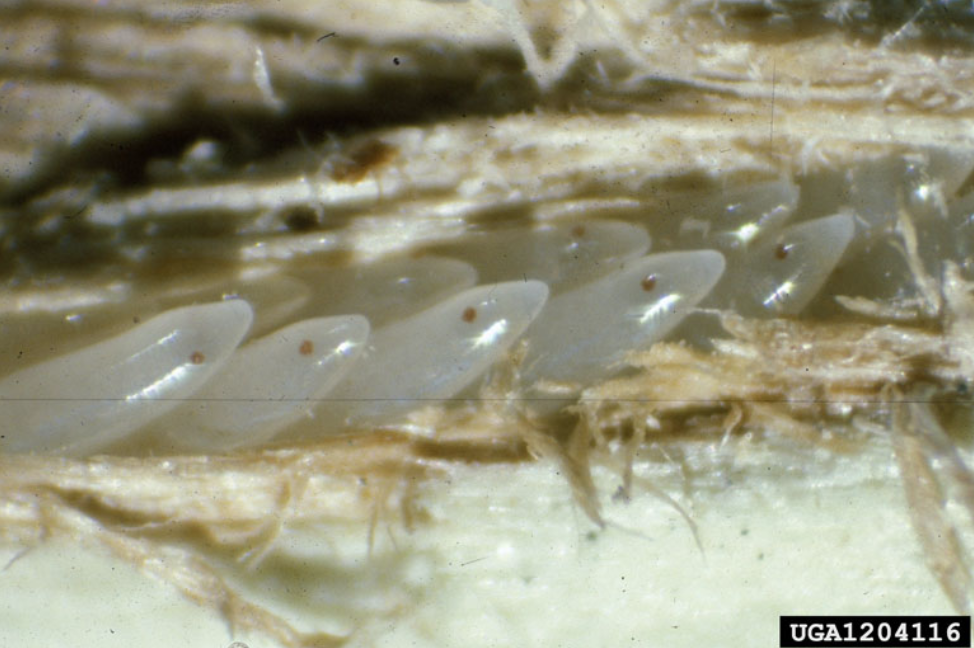
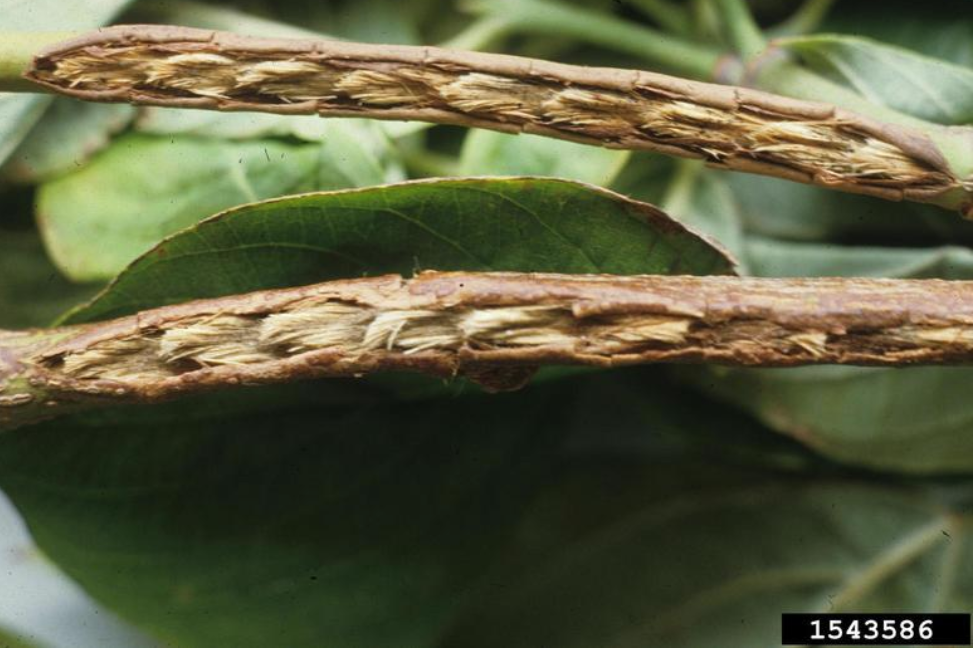
Impacts of periodical cicadas:
Periodical cicadas are generally harmless to people and pets. Cicadas do not bite readily or sting, and they are not toxic. However, they can be considered a nuisance because of their sheer abundance and near-constant noise. In spots with high periodical cicada activity, sound levels can be similar to a vacuum cleaner or a busy road (approx. 70-80+ decibels). In spots where periodical cicadas emerge, their calling could potentially interfere with outdoor gatherings, such as weddings, graduation parties, cookouts, and other social events.
Periodical cicadas can technically damage trees and shrubs. After mating, adult females use a spear-like ovipositor (egg-laying structure) to slice into twigs and small branches. Periodical cicadas are known to be associated with over 70 different types of plants, including forest, yard, and fruit trees. Trees commonly affected include oak, maple, apple, birch, dogwood, and hickory. Egg-laying injury can kill affected tissues and cause the associated leaves to turn brown and wilt—a symptom known as “flagging”. For most trees, this damage tends to be minimal as a small percentage of the overall canopy is affected. Thus, established trees generally withstand this temporary stress without any long-term harm. Damage could be more significant on small trees and shrubs as these plants have many branches that are of a size (1∕4 to 1∕2 inch diameter) preferred by cicadas. On small plants, a greater percentage of the overall canopy can be affected. Below-ground, cicada nymphs suck sap from tree roots, although plants typically tolerate this feeding activity with little harm.
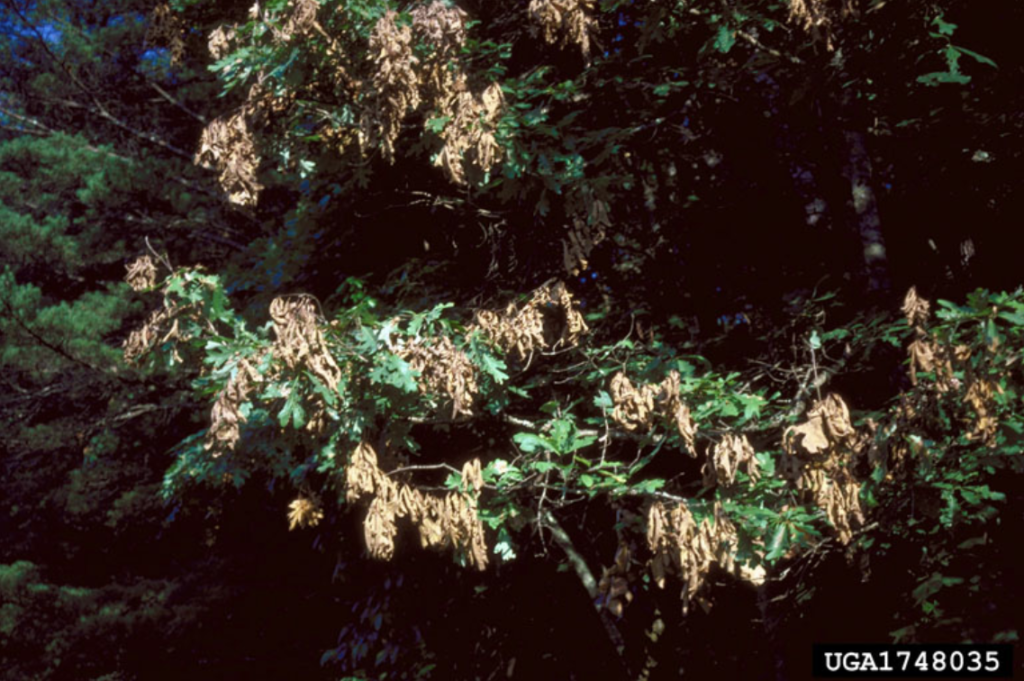
Management:
The emergence of periodical cicadas is an amazing natural phenomenon that only occurs every 17 years in Wisconsin. In most cases, there is no need to attempt to control periodical cicadas and the adults will only be active for a matter of weeks. Insecticides are generally not needed or recommended for periodical cicadas.
Mitigating nuisance noise: In situations where noise from periodical cicadas might interfere with outdoor events, postponing events or relocating to another site (or indoors) could be considerations.
Protecting plants: Since cicada oviposition damage tends to be tolerated by large trees, management is usually not feasible or recommended. Management may be needed for smaller trees and shrubs. One consideration is to postpone any new planting in a year of cicada emergence until after adult activity has subsided. Small trees and shrubs already in the landscape can be protected with mesh netting during the egg laying period. Netting should have a mesh size of roughly 1∕4 inch or less and should be placed over the trees when males are first heard singing. Netting should be secured to the trunk beneath the lower branches and may be removed once adult activity has ended. If egg laying cannot be avoided, eggs can be removed by pruning out and destroying young twigs in which the eggs have been deposited. This control option must be implemented shortly after eggs have been laid.
Additional Images
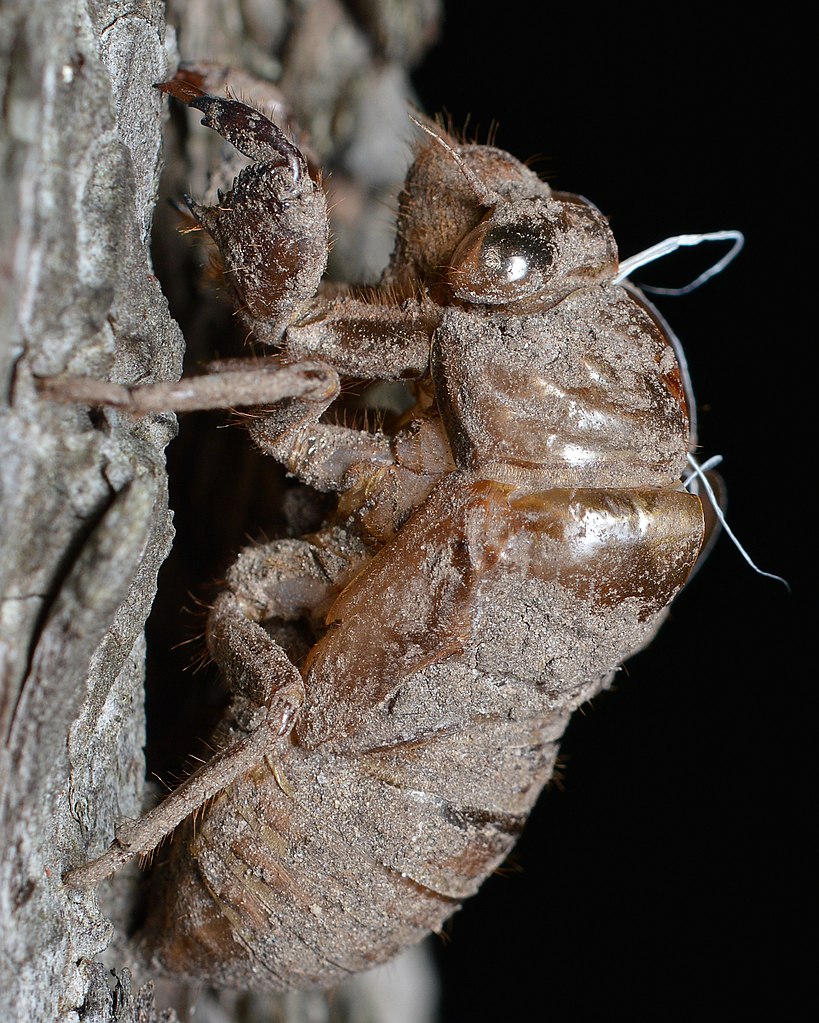
Download Article





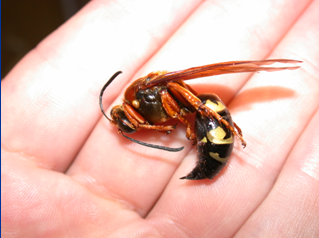 Cicada Killer Wasps
Cicada Killer Wasps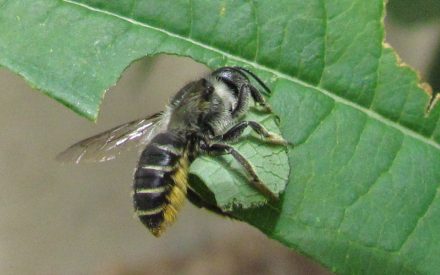 Wisconsin Bee Identification Guide
Wisconsin Bee Identification Guide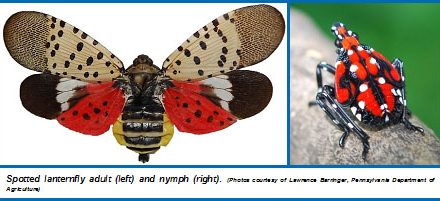 Spotted Lanternfly
Spotted Lanternfly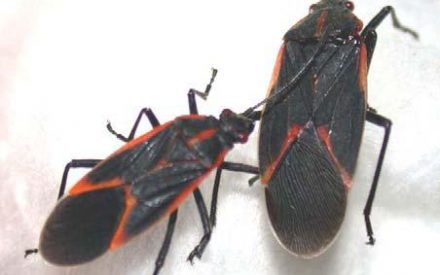 Boxelder Bugs
Boxelder Bugs


